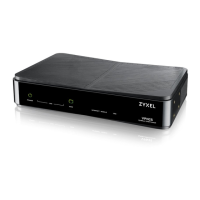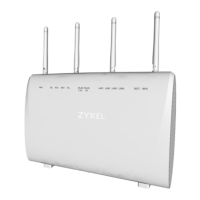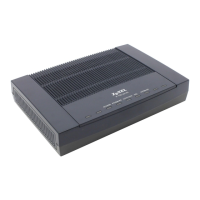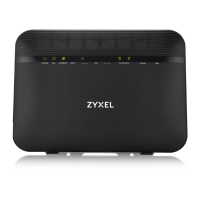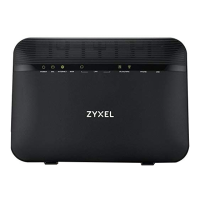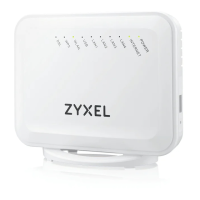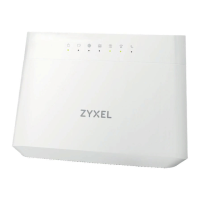Chapter 45 IPv6 Cache
VES1724-56 User’s Guide
375
45.4 Path MTU
Click the Path MTU link in the Management > IPv6 Cache screen to open the following screen.
Use this screen to check IPv6 path MTU sizes. In IPv6, packets can be fragmented only by the
source device from which the packets are sent. The source device must adjust the MTU size if it
Router This field displays the router’s IPv6 address for the route through this interface.
Hop Limit When forwarding an IPv6 packet, IPv6 routers are required to decrease the Hop
Limit by 1 and to discard the IPv6 packet when the Hop Limit is 0.
This field displays the maximum number of network segments that a packet can
cross before reaching the destination. 0 displays if the router does not specify the
setting.
Lifetime(sec)
This is the number of seconds in which hosts can use the router as the default
router. 0 displays if the router is not a default router.
M-flag
This field displays 1 if the Switch indicates to hosts to obtain network settings
(such as prefix and DNS settings) through DHCPv6. Otherwise, 0 displays if the
Switch indicates to hosts that DHCPv6 is not available and they should use the
prefix in router advertisements the router sends.
O-flag
This field displays 1 if the Switch indicates to hosts to obtain DNS information
through DHCPv6. Otherwise, 0 displays if the Switch indicates to hosts that DNS
information is not available in this network.
Reachable Time(ms)
This is the time in milliseconds the router can wait for a neighbor device’s
reachability confirmation before the router determines the device is not reachable.
0 displays if the router does not specify the setting.
Retransmit Time(ms) The is the time in milliseconds the router waits before resending a neighbor
solicitation packet. 0 displays if the router does not specify the setting.
MTU The Maximum Transmission Unit. This field displays the maximum size of each
IPv6 data packet, in bytes, that this router can accept. If a larger packet arrives,
the Switch divides it into smaller fragments before forwarding them to the router.
Prefix This field displays the network address used for host stateless address
autoconfiguration.
On-link This field displays 1 if the Switch can use this prefix for on-link determination.
Otherwise, it displays 0.
A prefix is considered to be on-link when it is assigned to an interface on a link. It’s
used to determine if an address is on the Switch’s subnet and can be reached
directly without passing through a router. An on-link interface is directly connected
to the Switch or connected through another switch.
If the Switch sends a packet to a host and the destination IP address is off-link, the
packet will be sent to a next-hop (a router in the router list) for this destination. If
the destination host is on-link, it is also the next hop.
Autoconfig This field displays 1 if hosts can use this prefix for stateless address
autoconfiguration. Otherwise, it displays 0.
Valid lifetime(sec) This field displays how long in seconds the prefix is valid for on-link determination.
Preferred
lifetime(sec)
This field displays how long in seconds addresses generated from the prefix via
stateless address autoconfiguration remain preferred.
Table 179 IPv6 Cache > Router
LABEL DESCRIPTION
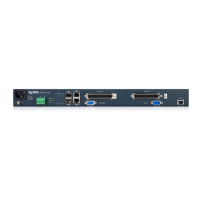
